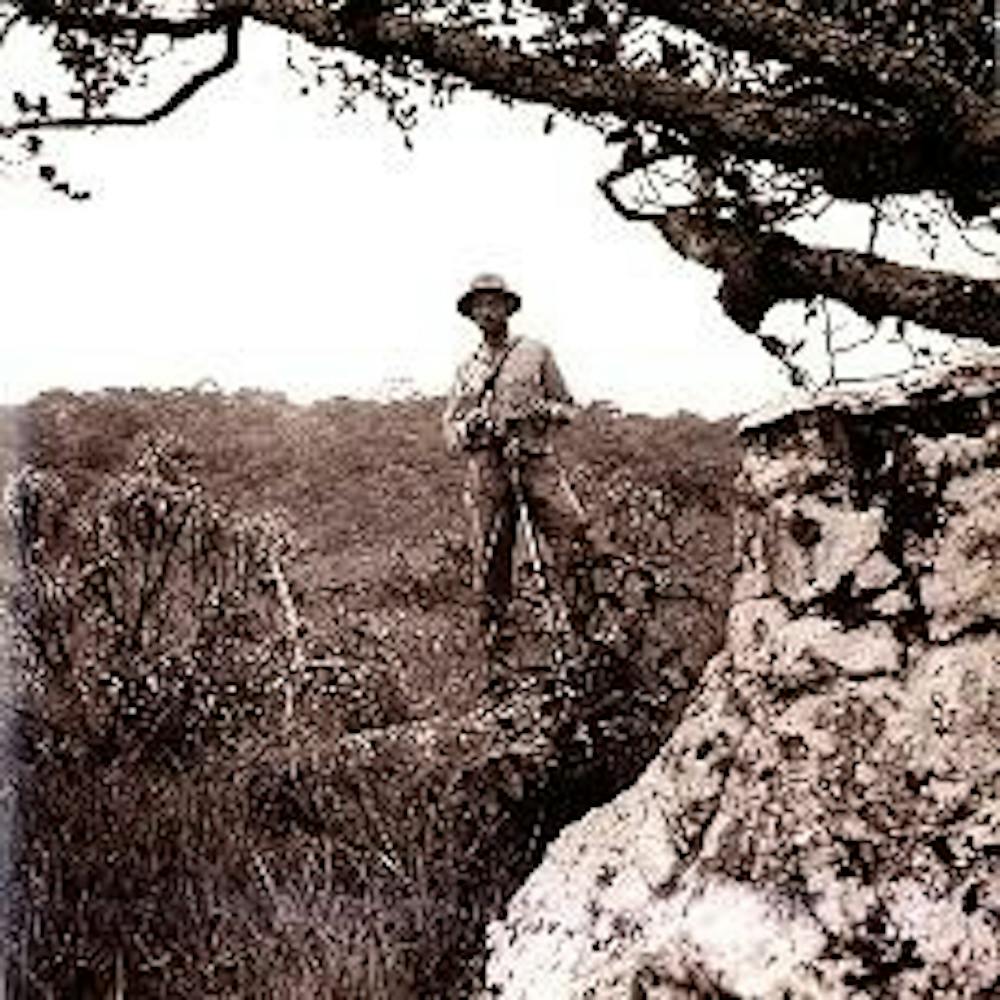Murky light filters through the trees, softly illuminating an Amazonian woman and her son as they harvest milky rubber from a tree. Captured permanently in black-and-white by the lens of a Rolleiflex twin-lens reflex camera, the two are frozen in careful toil. For a botanist, Richard Evans Schultes has got quite the photographic eye.
The photo is a part of "The Lost Amazon: The Photographic Journey of Botanist Richard Evans Schultes," which opened last Thursday at the National Museum of Natural History. The exhibit chronicles Schultes' expedition through the Colombian Amazon in the 1940s and '50s.
Schultes embarked on the trek in 1941 to learn more about curare, a naturally occurring toxin used in poisoned arrow tips, nicknamed "the flying death."
If it weren't for the United States' involvement in World War II, Schultes' journey would likely have ended there. Schultes remained in the region for a total of 12 years because the United States needed a more reliable source of rubber to continue the war effort, which could be found in the Amazon. Schultes emerged from the region botanically rich after having the chance to study two-dozen native tribes and 27 cases of malaria.
During his unusually long stay, he discovered and cataloged more than 25,000 botanical species previously unknown to Western scientists, including 2,000 medicinal plants. Schultes, whom the exhibit refers to as "Father of Ethnobotany," used the Amazonian Indians he lived with as escorts through the thick jungle, as well as guides to native flora. He virtually created the field of ethnobotany, the study of the relationship between the people of a region and its plants.
His interest in the way natives interacted with plants in their region expanded into an interest in the natives themselves. Schultes proved to be quite the amateur anthropologist and perhaps even folklorist.
He was the eventual author of 10 books, and it is excerpts from these books as well as from author and explorer Wade Davis' biography of Schultes that caption most of the photos in the exhibit. Photos of Yukuna Indian men are accompanied by detailed descriptions of rituals they are about to perform, for instance. Other captions further touch on the religious beliefs and ancestral legends of the various tribes Schultes resided with during the years he spent in the region.
Schultes' interest in the people he lived with translates beautifully into photographs. Though some photos on display do include his ethnobotanical subjects - including two cucumbers he purchased in a local market - his affection for the region really shines in the ones that depict the people he learned from.
In one room, natives in what appears to be ceremonial dress are like George Catlin paintings come to life. Schultes captured the essence of these waning pockets of wilderness 200 years after Catlin attempted to preserve the declining cultures of North American Indians.
Schultes' camera, his most reliable companion in the Amazon, is also on display, as well as one of his field notebooks and several of the specimens he collected. Schultes is in many of the photos, every bit the rugged adventurer in his camp shirts and desert boots.
The exhibit does an excellent job of painting Schultes into the landscape he was so fond of. The botanist's own words, as well as the affectionate characterizations of his biographer, do much to enhance his presence in the display. One plaque notes that several species of plants are now named for Schultes. It seems that the man is as much a part of the jungle now as it was of him.





